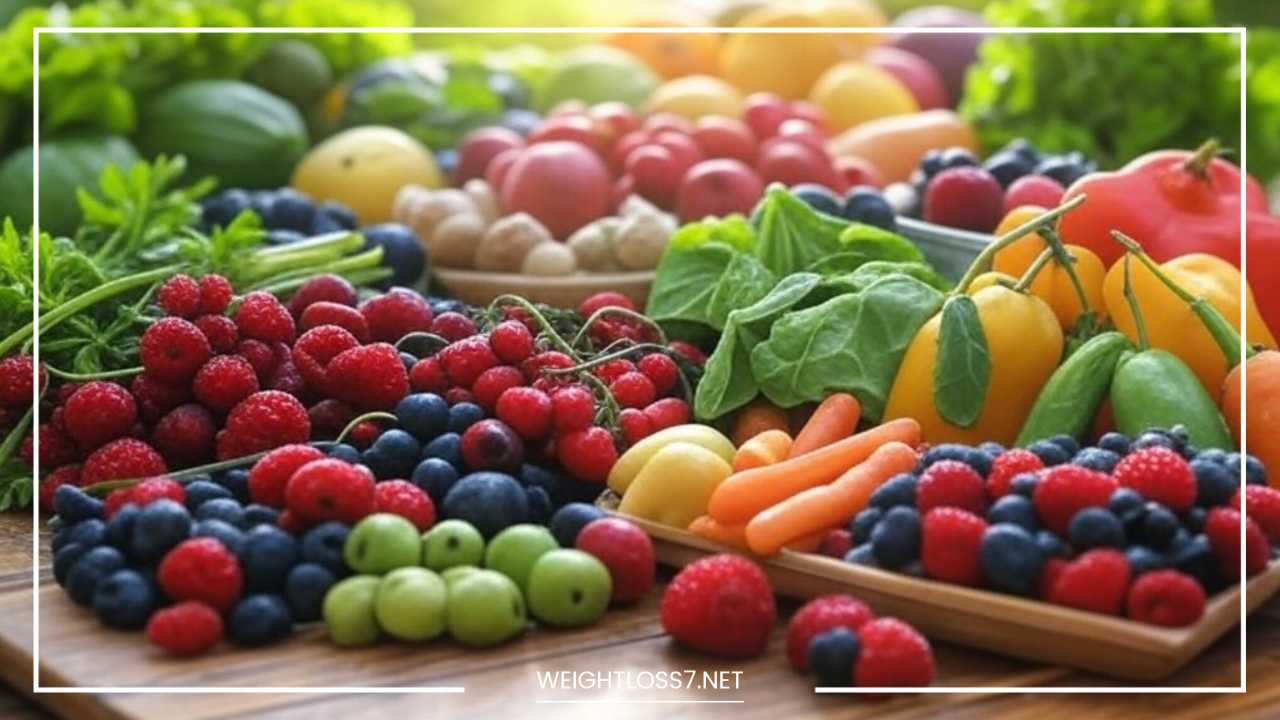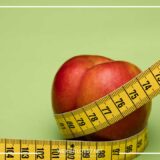Food That Controls Blood Pressure

Blood Pressure
The Power of Your Plate: Foods That Can Help Control Blood Pressure
High blood pressure, or hypertension, is a major global health issue affecting millions of individuals worldwide.
Often referred to as the “silent killer,” hypertension typically shows no immediate symptoms, yet it can have profound consequences on your health.
Over time, high blood pressure can significantly increase the risk of serious conditions such as heart disease, stroke, kidney failure, and vision problems.
Though medication is often prescribed to manage high blood pressure, adopting a heart-healthy diet can play an equally important role in both preventing and controlling hypertension.
This article explores the powerful connection between food and blood pressure, diving deep into the nutrients and food groups that can help lower and maintain healthy blood pressure levels.
By becoming more mindful of your food choices, you can take proactive steps to protect your heart, enhance your well-being, and promote long-term health.
Understanding Blood Pressure and Its Impact
Before diving into the specifics of diet, it’s essential to understand what blood pressure is and why maintaining a healthy level is critical for your overall health.
Blood pressure refers to the force of blood against the walls of your arteries as your heart pumps blood throughout the body.
It is typically measured in millimeters of mercury (mmHg) and is expressed as two numbers:
- Systolic pressure: The top number, which measures the pressure in your arteries when your heart beats and pumps blood.
- Diastolic pressure: The bottom number, which measures the pressure in your arteries when your heart is resting between beats.
Blood pressure readings are classified as follows:
- Normal: Less than 120/80 mmHg
- Elevated: 120-129/less than 80 mmHg
- Hypertension (Stage 1): 130-139/80-89 mmHg
- Hypertension (Stage 2): 140 or higher/90 or higher mmHg
A healthy blood pressure reading is generally considered to be below 120/80 mmHg. When blood pressure consistently rises above this range, it is classified as hypertension.
Uncontrolled hypertension can lead to damage in various organs and systems. As blood pressure increases, it can weaken and stiffen blood vessels, making it harder for blood to flow smoothly. The risks of chronic high blood pressure include:
- Heart Disease: High blood pressure puts extra strain on the heart and blood vessels, increasing the likelihood of heart disease, including heart attack, heart failure, and angina.
- Stroke: High blood pressure is a leading cause of strokes, which occur when blood flow to the brain is obstructed or interrupted.
- Kidney Disease: Over time, hypertension can damage the kidneys’ tiny blood vessels, leading to kidney disease, kidney failure, or other renal complications.
- Vision Loss: High blood pressure can damage the delicate blood vessels in the eyes, leading to vision problems and even blindness.
The Role of Diet in Blood Pressure Management
Managing blood pressure isn’t just about taking medication; diet plays a crucial role in both preventing and controlling hypertension.
In fact, adopting a heart-healthy diet can help you avoid the need for medication or reduce the amount of medication needed to manage blood pressure effectively.
Here are the primary ways in which your diet can influence your blood pressure:
- Reducing Sodium Intake: Excess sodium in the diet causes the body to retain excess water, increasing blood volume, which in turn raises blood pressure. Reducing sodium intake is one of the most important dietary changes you can make to lower blood pressure.
- Increasing Potassium Intake: Potassium works to counterbalance the effects of sodium by helping the kidneys excrete excess sodium from the body. It also helps relax the walls of blood vessels, which can lower blood pressure.
- Providing Essential Nutrients: A diet rich in fruits, vegetables, whole grains, lean proteins, and healthy fats provides essential nutrients like magnesium, calcium, and antioxidants that support heart health and help regulate blood pressure.
Foods That Can Help Lower Blood Pressure
Incorporating specific foods into your daily diet can significantly contribute to maintaining healthy blood pressure. Below are foods and nutrients that have been shown to have positive effects on blood pressure:
1. Fruits and Vegetables
Fruits and vegetables are packed with vitamins, minerals, antioxidants, and fiber—all of which promote heart health and regulate blood pressure.
Certain fruits and vegetables, in particular, have been shown to be especially beneficial for lowering blood pressure:
- Berries: Blueberries, strawberries, and raspberries are rich in anthocyanins, antioxidants that have been linked to lower blood pressure. Studies suggest that eating berries regularly can help relax the blood vessels and improve circulation.
- Bananas: Bananas are an excellent source of potassium. Potassium helps the body balance the effects of sodium, which can help relax blood vessels and lower blood pressure. One medium-sized banana provides around 400-450 mg of potassium.
- Citrus Fruits: Oranges, lemons, and grapefruits are high in vitamin C, flavonoids, and fiber. These nutrients have been associated with improved vascular function and reduced blood pressure.
- Leafy Greens: Vegetables like spinach, kale, and collard greens are rich in nitrates, which have been shown to help relax blood vessels and reduce blood pressure. One cup of cooked spinach provides around 600-700 mg of potassium, making it an excellent choice for those looking to lower their blood pressure.
- Broccoli: Broccoli contains sulforaphane, a compound that can help reduce oxidative stress and inflammation in the body. It has been shown to improve blood pressure by promoting better blood vessel function.
- Tomatoes: Tomatoes are rich in lycopene, a powerful antioxidant that can help lower blood pressure. Studies have shown that lycopene may help reduce the risk of stroke and improve cardiovascular health.
2. Whole Grains
Whole grains are a rich source of fiber, which can improve blood pressure by lowering cholesterol levels and supporting heart health.
Whole grains also provide important minerals like magnesium, which plays a role in regulating blood pressure. Choose whole grains over refined grains to get the full range of benefits. Some great options include:
- Oats: Oats are a particularly good source of beta-glucan, a type of soluble fiber that helps lower cholesterol and blood pressure. Studies have shown that regular consumption of oats can reduce systolic blood pressure by up to 5 mmHg.
- Brown Rice: Brown rice is an excellent source of magnesium, a mineral that helps relax blood vessels and regulate blood pressure. It is also high in fiber, which promotes cardiovascular health.
- Quinoa: This ancient grain is considered a complete protein, containing all nine essential amino acids. It’s also a rich source of magnesium, which can help lower blood pressure by relaxing blood vessel walls.
- Whole-Wheat Bread: Whole-wheat bread is far superior to white bread in terms of fiber content. It also provides more nutrients like magnesium, which helps improve blood pressure.
3. Legumes
Legumes, such as beans, lentils, and peas, are packed with protein, fiber, potassium, and magnesium—all of which are beneficial for blood pressure.
Including legumes in your diet can help lower blood pressure by improving heart health and supporting better blood flow.
- Lentils: These small, nutrient-dense legumes are particularly high in potassium and fiber, both of which help regulate blood pressure. Lentils also have a low glycemic index, which means they don’t cause rapid spikes in blood sugar.
- Chickpeas: Chickpeas are another excellent source of potassium, magnesium, and fiber. Studies suggest that a diet rich in chickpeas can help lower blood pressure, particularly in those with hypertension.
- Black Beans: Black beans contain high levels of potassium, magnesium, and fiber, which can help lower blood pressure and reduce the risk of cardiovascular disease.
4. Nuts and Seeds
Nuts and seeds are rich in healthy fats, fiber, and minerals like magnesium and potassium, all of which can help lower blood pressure. Choose unsalted varieties and consume them in moderation, as they are calorie-dense.
- Almonds: Almonds are a great source of magnesium, which helps regulate blood pressure. Studies have shown that consuming almonds regularly can improve blood vessel function and reduce blood pressure.
- Chia Seeds: These tiny seeds are packed with omega-3 fatty acids, fiber, and magnesium. Omega-3s have been shown to lower blood pressure and reduce the risk of heart disease.
- Flaxseeds: Flaxseeds are rich in alpha-linolenic acid (ALA), a type of omega-3 fatty acid that helps relax blood vessels and lower blood pressure.
5. Fatty Fish
Fatty fish like salmon, mackerel, and tuna are rich in omega-3 fatty acids, which have been shown to reduce blood pressure by improving blood vessel function, reducing inflammation, and lowering triglyceride levels.
Omega-3s also help reduce the risk of cardiovascular disease and stroke. Aim for at least two servings of fatty fish per week to reap the benefits.
- Salmon: Rich in omega-3s, salmon can help reduce blood pressure and lower triglyceride levels. It is also high in vitamin D, which supports overall heart health.
- Mackerel: Mackerel is another excellent source of omega-3 fatty acids, and it is rich in protein and nutrients that support heart health.
- Tuna: Tuna is a lean, protein-rich fish that contains omega-3s. Canned tuna can be a convenient and affordable source of these heart-healthy fats.
6. Dark Chocolate
Dark chocolate, when consumed in moderation, can have a beneficial effect on blood pressure.
The flavonoids in dark chocolate help relax blood vessels and improve blood flow, leading to a reduction in blood pressure.
Choose dark chocolate that contains at least 70% cocoa to get the most benefit. A small piece (around 1 ounce) a few times a week can help improve cardiovascular health.
7. Garlic
Garlic has long been recognized for its medicinal properties, including its ability to lower blood pressure. Garlic contains compounds such as allicin that help relax blood vessels and improve blood flow.
Studies have shown that garlic supplements can lower both systolic and diastolic blood pressure, especially in individuals with hypertension. You can incorporate garlic into your diet by adding it to savory dishes, salads, or smoothies.
8. Olive Oil
Olive oil is a healthy fat that can help lower blood pressure. It is rich in monounsaturated fats and antioxidants, both of which support heart health.
A diet rich in olive oil has been shown to reduce systolic blood pressure and improve cholesterol levels. Use olive oil as your primary cooking oil and drizzle it over salads, vegetables, or whole grains.
9. Hibiscus Tea
Hibiscus tea is an herbal beverage made from the dried petals of the hibiscus flower. It has been shown to lower blood pressure by relaxing blood vessels and improving circulation.
Studies suggest that drinking hibiscus tea regularly can reduce both systolic and diastolic blood pressure in people with hypertension. Enjoy a cup of hibiscus tea in the morning or evening to reap the benefits.
Foods to Limit or Avoid
While some foods can help lower blood pressure, others can contribute to high blood pressure and increase the risk of heart disease. It’s important to limit or avoid the following foods:
1. High-Sodium Foods
Sodium is a major contributor to high blood pressure, as it causes the body to retain water and increase blood volume.
Processed foods, fast food, salty snacks, canned soups, and deli meats are typically high in sodium. Read food labels carefully to identify products with excessive sodium content. When cooking at home, try to limit added salt and use herbs, spices, and lemon juice for flavor.
2. Saturated and Trans Fats
Saturated fats, found in red meat, full-fat dairy products, and processed meats, can raise cholesterol levels and contribute to high blood pressure.
Trans fats, often found in fried foods, baked goods, and margarine, are particularly harmful to heart health.
Limit your intake of these unhealthy fats by choosing lean cuts of meat, reducing your intake of full-fat dairy, and avoiding processed foods.
3. Added Sugars
Added sugars, found in sugary drinks, desserts, candies, and processed foods, contribute to weight gain and an increased risk of heart disease.
Excess sugar consumption can lead to insulin resistance, which in turn raises blood pressure. Limit your intake of added sugars to support overall heart health.
4. Excessive Alcohol
Excessive alcohol consumption can raise blood pressure and contribute to heart disease. If you choose to drink, do so in moderation.
The American Heart Association recommends no more than one drink per day for women and two drinks per day for men.
Creating a Blood Pressure-Friendly Diet
To create a diet that supports healthy blood pressure levels, consider the following tips:
- Emphasize whole foods: Focus on whole, unprocessed foods such as fruits, vegetables, whole grains, legumes, nuts, and seeds. These foods are naturally rich in nutrients that support heart health.
- Limit processed foods: Processed foods often contain excessive sodium, unhealthy fats, and added sugars that can negatively impact blood pressure. Choose fresh, whole foods whenever possible.
- Cook at home: Cooking your meals at home allows you to control ingredients and sodium content, helping you maintain a heart-healthy diet.
- Stay hydrated: Drinking plenty of water is important for overall health and can help regulate blood pressure.
- Monitor portion sizes: Eating in moderation can help maintain a healthy weight and prevent excessive calorie intake, which can raise blood pressure.
Additional Lifestyle Factors
Along with a heart-healthy diet, several lifestyle factors play a role in maintaining healthy blood pressure:
- Exercise regularly: Aim for at least 30 minutes of moderate-intensity exercise most days of the week. Physical activity can improve heart function and reduce blood pressure.
- Maintain a healthy weight: Even losing a small amount of weight can help lower blood pressure significantly.
- Manage stress: Chronic stress can contribute to high blood pressure. Practice relaxation techniques like meditation, yoga, or deep breathing exercises.
- Get enough sleep: Aim for 7-8 hours of quality sleep each night, as poor sleep can raise blood pressure.
- Limit alcohol consumption: Drink alcohol in moderation to prevent spikes in blood pressure.
- Quit smoking: Smoking is a major risk factor for heart disease and hypertension. Quitting can significantly improve cardiovascular health and lower blood pressure.
Final Thoughts
Managing blood pressure is essential for heart health and preventing serious health complications. By making mindful dietary choices, exercising regularly, and adopting a healthier lifestyle, you can take proactive steps to maintain or reduce your blood pressure levels.
Including foods that are rich in potassium, magnesium, fiber, antioxidants, and healthy fats can have a powerful impact on your blood pressure, while limiting sodium, unhealthy fats, and added sugars is equally important.
Remember, the best way to lower and maintain healthy blood pressure is through a combination of proper nutrition, regular physical activity, and smart lifestyle choices.
Consult with your healthcare provider for personalized advice and to determine what dietary changes are right for you. The power to manage your blood pressure is in your hands—one meal at a time.

















